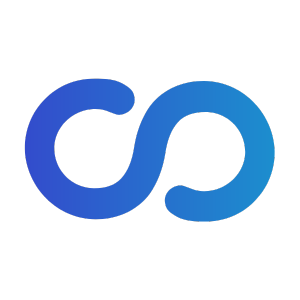Connecting Brands with Patients: The New Standard for Precision Targeting
By: [email protected], Content Manager, Swoop/IPM.ai
Tapping into higher quality audiences leads to greater script lift; here’s how to leverage custom segments and reach patients effectively.
Healthcare marketers can no longer rely on web and app-based platforms for patient targeting. Though a go-to strategy for over a decade, Apple, Facebook, Android and Google recently changed their policies to end data tracking for marketing purposes. This has created an avalanche in the industry, with consumer protection now favored over advertising reach.
Many are left wondering how to fill the gap created by losing this approach, which has squeezed other channels that lack the same scale. For instance, sponsored content and contextual targeting have become pricier and less available, despite yielding fewer returns. Fortunately, there is a precise way to target patients that offers the same seemingly limitless reach as clickstream data. Health data targeting is the solution the industry needs right now, especially as other channels fall short or fail.
With privacy-safe health data targeting, brands can create custom audience segments based on any range of unique criteria. These audiences are generated from health data that is gathered entirely in the real world and refined using artificial intelligence (AI). Instead of tracking consumer activity through mobile or web, which creates noisy data, is unclear (e.g., an individual researching a condition for school or work) and is a privacy risk, health data targeting relies on claims data, which include doctor’s visits, hospital stays and prescriptions filled. Swoop’s privacy-safe real world data (RWD) universe covers an individual’s entire health history going back a decade and encompasses 300 million patient journeys spanning ten years. RWD is refreshed weekly, so it is never outdated or stagnant.
Relying on offline data is a much more informed way to target than is possible through traditional approaches including web/app targeting, demographic data, or off-the-shelf segments – none of which group together diagnosed patients. Unlike these outdated tactics, custom segments are defined by a high audience quality (AQ) consisting of confirmed patients. While it may seem obvious, the higher the AQ, the greater the likelihood of script lift. Marketers can’t drive script lift without targeting the right patients, which is why AQ is a key metric to determine how successful a campaign will be.
When marketers are connected to niche audiences, they can craft personalized messages that are more likely to trigger a response. If a patient sees an ad that speaks to their condition, there is a better chance they will be motivated to control their healthcare journey by calling their physician to receive medical advice or filling a prescription.
Health data targeting avoids the risk of compromising patient integrity as it is built on a privacy-safe architecture that tokenizes all individuals. Swoop’s segments go through a process called K-anonymity, a scientific way to guarantee patients cannot be re-identified. Again, this is the opposite of clickstream targeting, which can be directly linked to a user – and sometimes their entire online network. While K-anonymity means that AQ can’t be greater than 50%, these segments still have higher prevalence rates than a random sample (even if they belong to a shared demographic), especially for rare and specialty conditions. Swoop’s segments typically include more than 100 to 5,000 times the number of patients found in the general population.
These audiences can be activated across channels, which is key as patients are more likely to retain a repeated message. Having an omnichannel solution also enables marketers to measure media impact strategically, leading to better budgeting – if a certain channel isn’t performing, spend can be leveraged elsewhere.
It’s time to take advantage of technology purpose-built for marketing and connect brands with precise patient audiences. While there is an obvious gap in the industry as formerly reliable platforms update their policies to exclude ad tracking, custom segments offer an even higher value way to target. Swoop has created more than 3,000 exclusive segments for 42 of the top 50 pharma companies and 18 of the top 20 healthcare agencies; we help empower patients to actively participate in their diagnostic and treatment journeys, which benefits brands while furthering health outcomes. A better patient audience exists, it’s now up to marketers to maximize campaign value by reaching the right people instead of casting the widest net.
![Privacy Infographic 062022_long_Swoop[30]](https://swoop.com/wp-content/uploads/2025/01/Privacy-Infographic-062022_long_Swoop30-scaled.jpg)
A Timeline of Health Marketing Changes
Health marketers that mostly target based on clickstream data are facing an industry in flux. Platforms that many have relied on for over a decade recently released or announced major privacy changes that impact advertisers and complicate clickstream targeting. Given this widespread unpredictability and a lack of detail on how privacy concerns will be reconciled from a marketing perspective, it’s obvious that medical advertisers need to move on from these outdated approaches.
April 26, 2021
Apple’s App Tracking Transparency
Apple’s iOS 14.5 update prompted users for their permission to be tracked across apps and according to Flurry Analytics, 96% of users declined. This has hurt advertisers that rely on platforms like Facebook to deliver targeted ads. Read more.–
January 19, 2022
Facebook Eliminates Detailed Ad Targeting for Sensitive Groups
Marketers are now blocked from targeting users through their interactions with content such as “World Diabetes Day” or belonging to groups such as “lung cancer awareness” or “chemotherapy.” Read more.
January 25, 2022
Google Announces “Topics” Alternative to Cookies
Instead of tracking users with cookies, “Topics” breaks down all search history over three weeks into broad categories. Advertisers will be given access to only three interests, or one topic from each of the last three weeks. Users can opt-out of being tracked or remove certain categories; search history is deleted every three weeks. Read more.
February 16, 2022
Google Will End Android Cross-App Tracking
Google is phasing out cross-app ad trackers in Android smartphones, giving users more data privacy through its “Privacy Sandbox,” which takes effect in 2024. Marketers who rely on user IDs for targeted advertising will be most impacted by the change as the new system limits third-party data sharing. Read more.
About the Author
Content Manager


